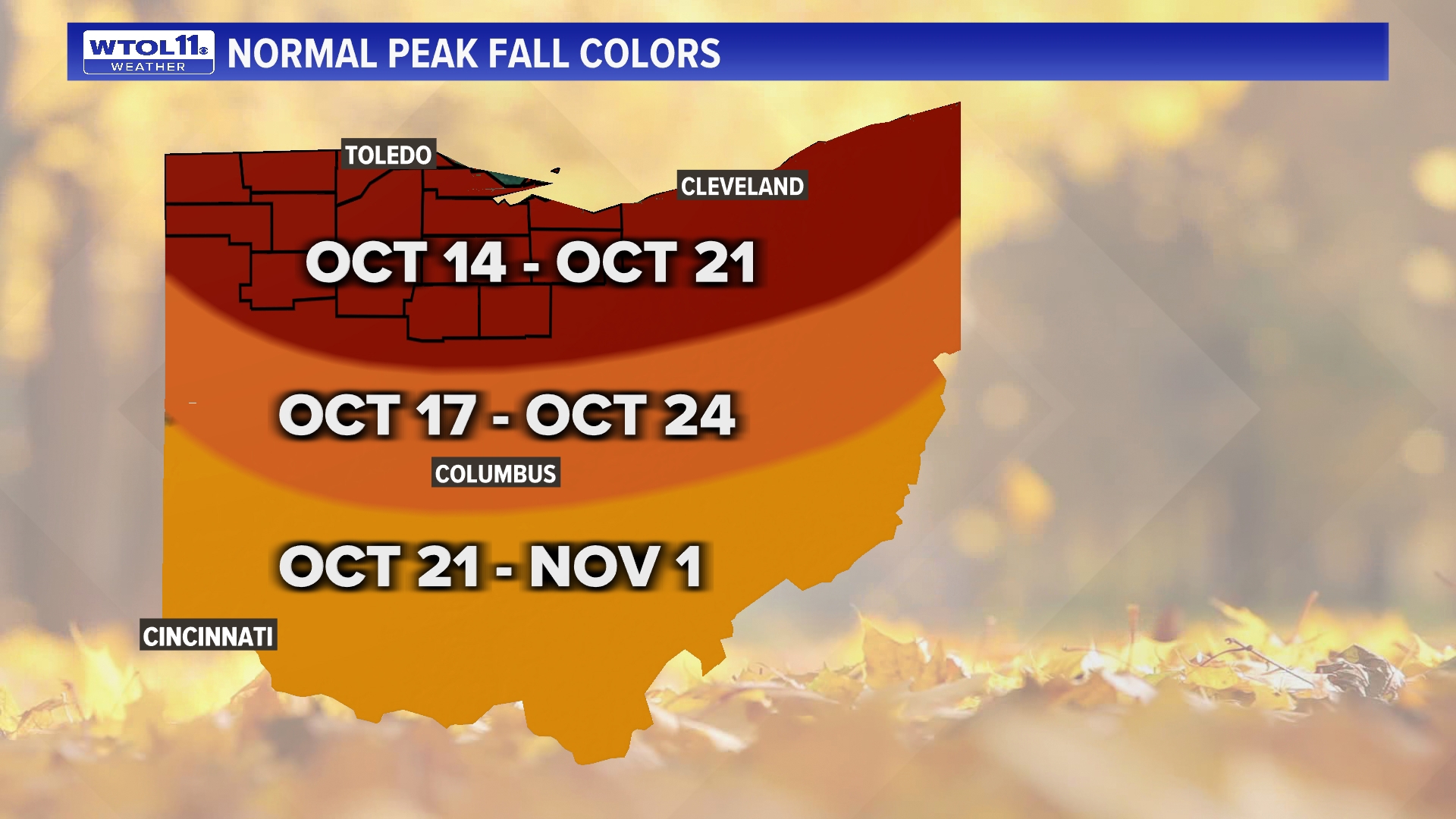TOLEDO, Ohio — Now that October has arrived, you may be eagerly anticipating the arrival of vibrant fall colors. October marks the peak of fall foliage in northern Ohio and southern Michigan, but recent drought conditions may impact this year's autumn colors.
In this first Climate Friday Newsletter of October, Meteorologist John Burchfield discusses the impacts of summer drought and other weather conditions on fall foliage and previews what you can expect this season.
Severe drought has continued into October for much of northwest Ohio, and recent rainfall from Hurricane Helene predominately impacted areas far south of Toledo. The Maumee River corridor from Toledo to Napoleon, Defiance and Fort Wayne remains under severe drought conditions, relatively devoid of needed rainfall over the last week.

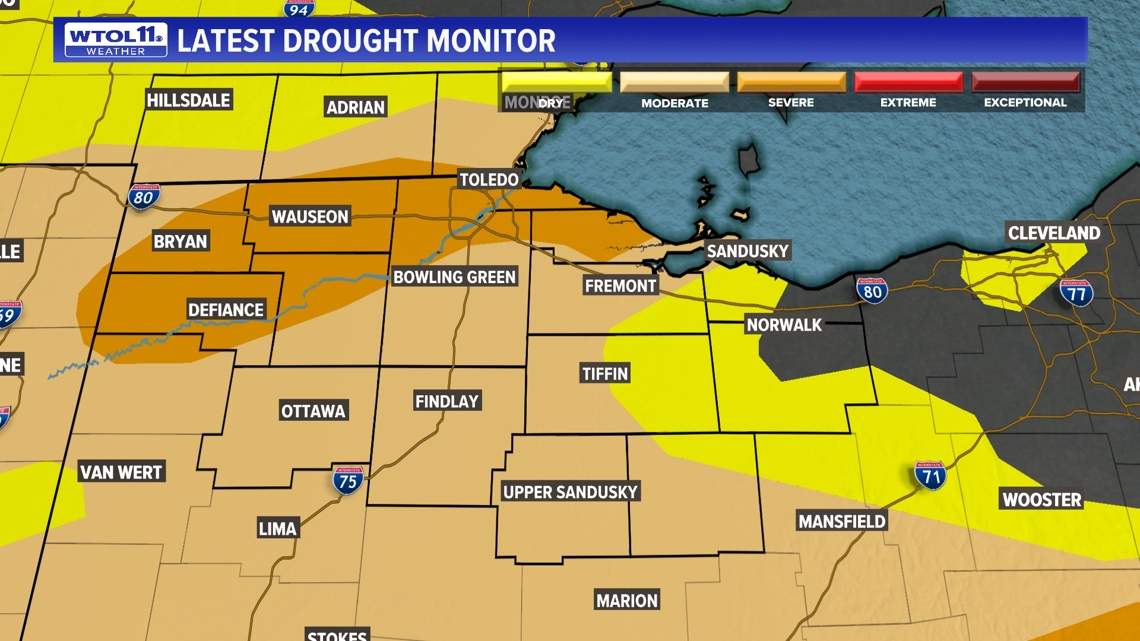
All of Lucas County is feeling the effects of a severe drought, and Toledo has only received 0.82 inches of rain since Sept. 1 at the official weather site at Toledo Express Airport. Rainfall is almost two and a half inches below-average this autumn, explaining the prevailing severe drought.
With an extremely dry weather pattern expected to linger through the middle of October, drought conditions are not likely to expand and worsen. So how will the drought affect fall colors and how do other weather conditions impact the foliage? Keep reading for the answer.
Summer weather plays a significant role in the arrival, duration, and vibrancy of fall colors. Summers with frequent rainfall typically precede falls with colorful leaves. After a wet summer, the leaves change color and fall off later in the fall season. The window of fall foliage typically lasts longer and provides more vibrant leaf peeping opportunities. Of course, too much rain can adversely affect the fall foliage season, but frequent doses of moderate rain produce beautiful autumn colors.
Summer drought often has the opposite effect on fall foliage. Dry summer weather typically causes a premature color change with a shorter viewing window and less vibrant hues. Drought conditions impose stress on trees that may cause leaves to shrivel up and turn brown before changing color. The ongoing severe drought may shorten the leaf peeping season and dampen the overall vibrancy of the fall landscape.

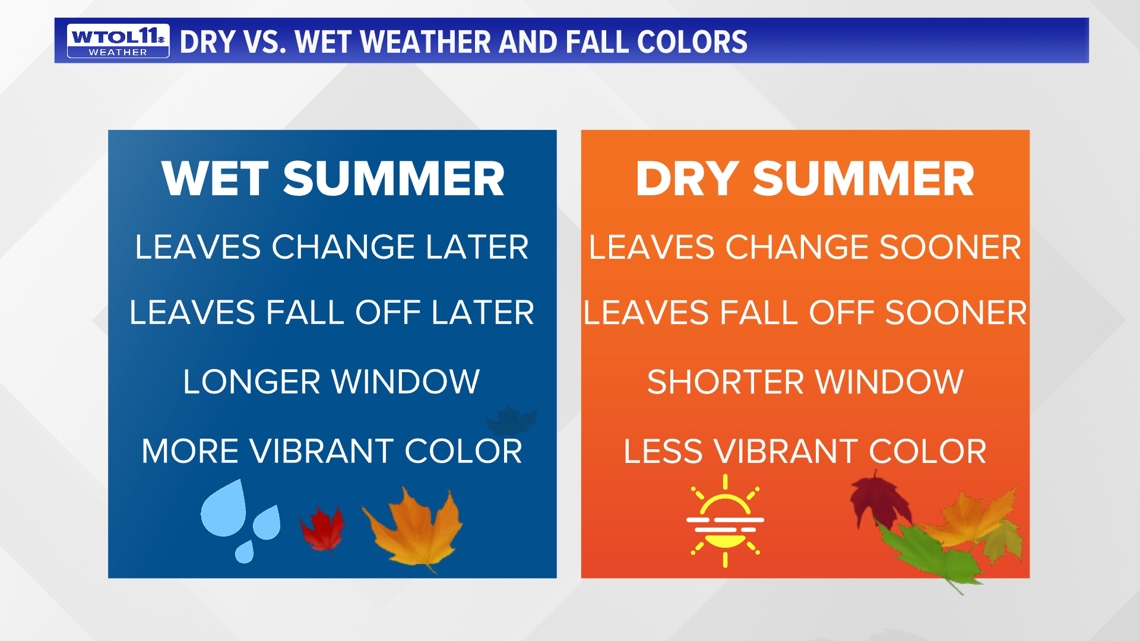
While summer drought negatively impacts fall colors, autumn weather conditions also play a significant role in how quickly the leaves change and how vibrant they appear. Cool, crisp fall nights trigger the cessation of the production of chlorophyll, the green pigment responsible for the color of leaves during the summer. Once chlorophyll production stops, other pigments associated with colorful hues become visible.
One pigment known as anthocyanin produces vibrant red colors after cool fall days. Crisp nights and sunny days tend to produce more vibrant and widespread red colors due to increased anthocyanin production. Generally, cool nights enhance fall colors and warmer nights tend to dull and delay changes in the leaves. Frequent warm nights allow the continued production of chlorophyll, while cooler temperatures enable other colorful pigments to show.

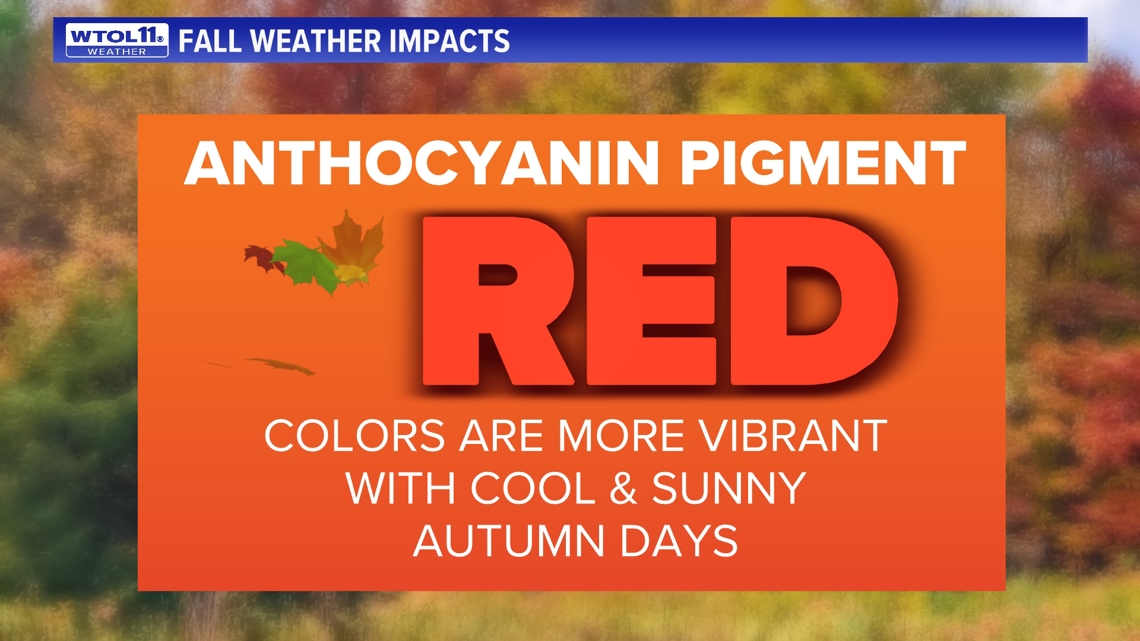
Despite the September drought, the upcoming forecast features many cooler nights with temperatures in the 40s, favorable for fall colors. There may still be some hope for leaf peepers, and the upcoming week or two will bring some substantial changes in the autumn landscape. Other weather factors that impact fall colors include storms and wind. Strong winds and torrential rain cause leaves to prematurely fall off trees, whereas calm winds lead to a later peak of fall color.

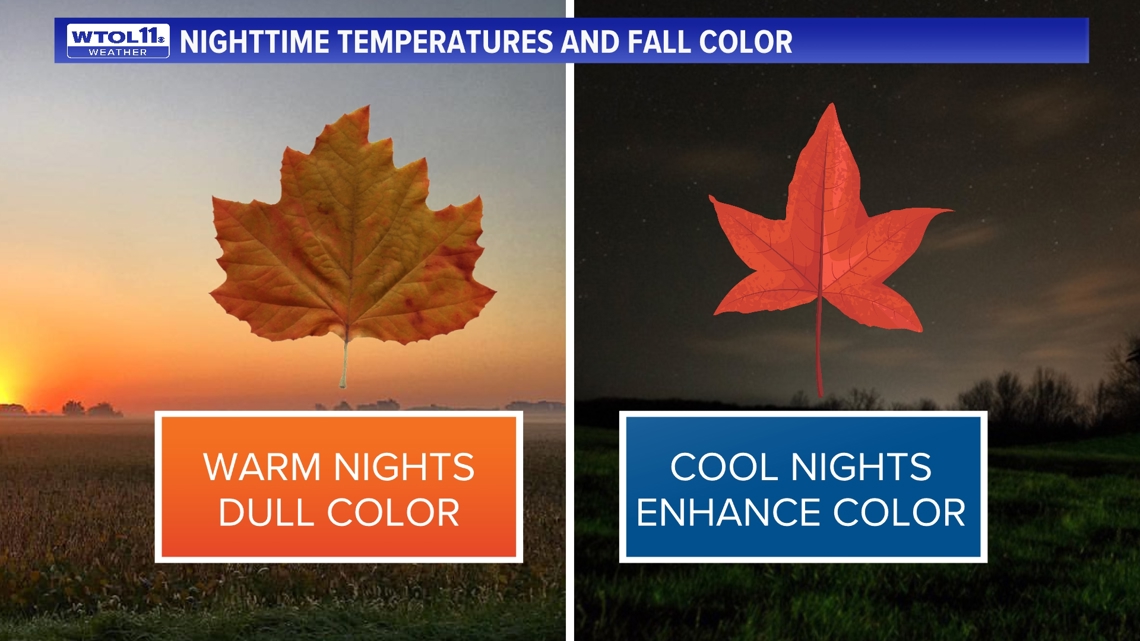
While some rainfall is necessary for the health of trees and vibrancy of foliage, excessive heavy rainfall can cause leaves to fall off before changing color, thus leading to bare trees earlier in the season and abbreviating the window of fall foliage.
With the cooler nights ahead, the coming weeks will bring some significant changes in the autumn landscape. So when do fall colors typically peak in the area? For southern Michigan, early to mid October usually brings the peak of fall color. By Halloween, the leaves are often past peak color in southern Michigan.

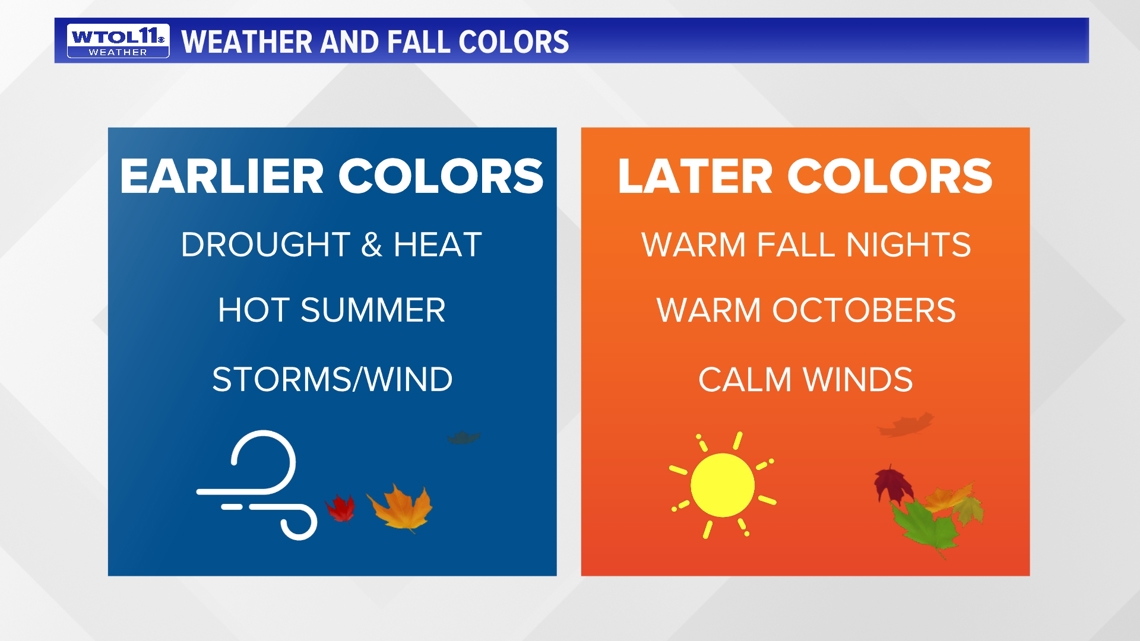
For northwest Ohio, the second and third weeks of October typically bring the most vibrant and widespread fall color. Late October still features some beautiful colors, but trees start to turn bare by early November. In central Ohio, the peak of fall foliage typically occurs between Oct. 17 and Oct. 24. Due to the warmer climate of southern Ohio, the peak of fall color typically occurs during the last week of October with vibrant foliage sticking around into the start of November.

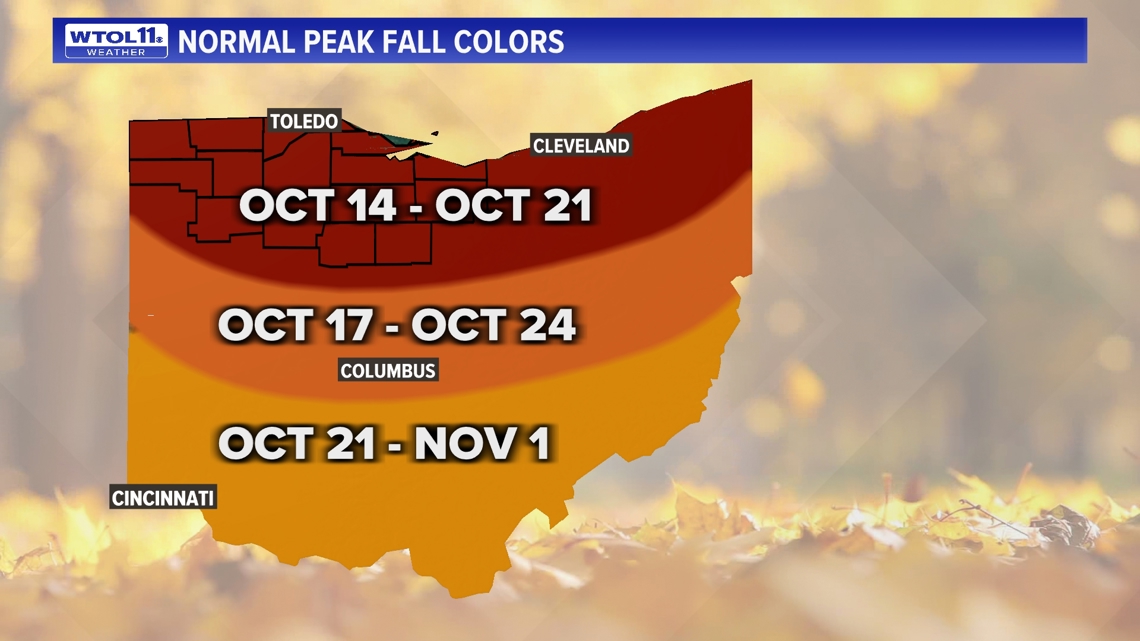
While these dates fluctuate from year to year based on weather conditions such as precipitation and temperatures, they provide a general guide for when you can expect the most colorful foliage. Because of the abnormally dry September weather, fall colors may arrive a bit sooner this year and lack the same vibrancy as during a wetter autumn. Additionally, the viewing window of peak color may be a bit shorter this year due to stress on trees from the long-lasting sunny and dry weather pattern.
With October underway, fall activities are in full swing and many are eagerly awaiting the arrival of autumn colors. Though the weather conditions this fall have not been favorable for ideal color, much of northwest Ohio and southeast Michigan will still enjoy beautiful fall foliage. Stay tuned to the Climate Friday Newsletter for the latest updates on fall foliage throughout the month of October.

